Last year BJP partnered up with Brighton-based camera manufacturer Intrepid Camera Co. to launch the Intrepid Film Photography Awards.
The three winning photographers each received a limited edition Intrepid 4 x 5 camera and film, courtesy of Ilford Photo, with which they have spent the past year creating new bodies of work. These will be showcased in a pop-up exhibition, at which Intrepid will be launching a Kickstarter for the new Intrepid Enlarger. Here, in the first of three editorials, we present the work that Sarah Christianson produced during the past year in North Dakota.
It’s hard to look at Christianson’s work and not pick up on the ominous atmosphere, or intense feelings of trepidation, which permeate the majority of North Dakota. It’s an atmosphere that is caught up in the billows of smoke, that floats above the endless rolls of empty hills, and that hides amongst the many rows of new-build man camps, which pepper the state.
These man camps, which provide temporary housing for oil field workers, are a byproduct of the oil boom that began in 2006. Government officials and oil companies have known about the rich oil resources lurking miles beneath the landscape for decades, but it wasn’t until the fracking process was perfected that these goods could be collected. As the chemical trucks, heavy duty machinery and equipment poured in, so too did those looking for a new start. The huge number of jobs available and the promise of financial security offered by the fracking phenomenon provided the catalyst for a sharp rise in migration to North Dakota, which, according to the U.S. Census Bureau, had the fastest growing economy in the country by 2014.
While many Republican and Democrat politicians view the oil boom as a huge success, the state’s residents and once bucolic, agrarian landscape, tell a different story. It is these narratives that interest Christianson. Tired of reading about the glossy, air-brushed version of the oil boom presented in the media, Christianson revisited North Dakota in 2012 to see the effects for herself. “It seemed as if the mainstream media was not paying attention to the impact on the land so I set out to investigate spills and other environmental abuses, and to take a long-term look at the landscape,” she explains.
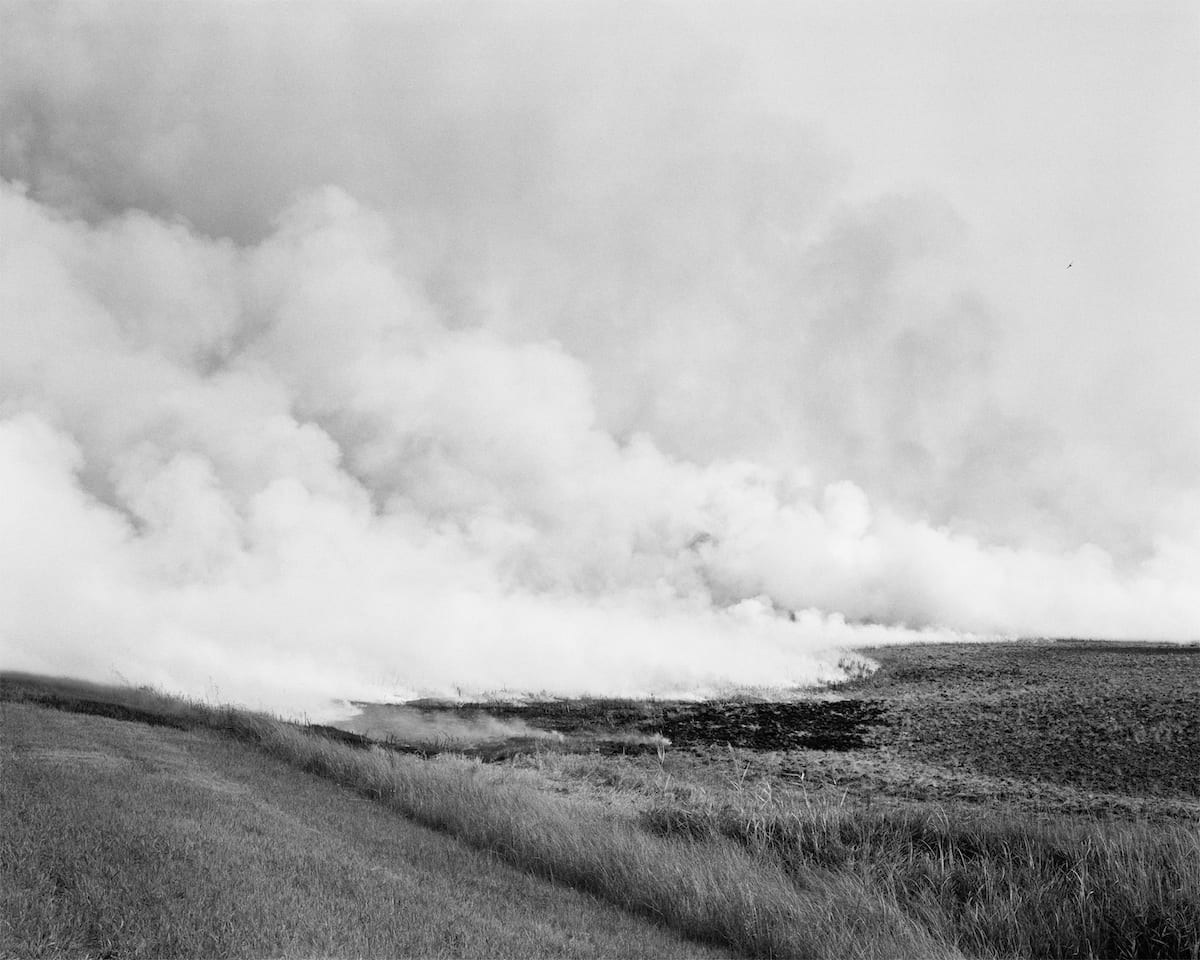
Bust always follows boom. What goes up must come down. And when it comes to fracking, there is no truer statement: one of the fundamental issues of the process is that as much as a third of what goes down the wellbore comes back up, resulting in huge oil spills and waste pits. These spread, creating lesions and abrasions across the once flat topography. Increases in air pollution and toxic chemicals, noise pollution, traffic, dust and litter are just some of the adverse effects of fracking.
Christianson has spent the past six years working on this ongoing series, which is an attempt to expose the visual impact of the oil boom and the scars it has inflicted upon the landscape. Below, the photographer discusses her vision for the series, offers an insight into the personal effects of the boom, and shares her experience of working with the Intrepid 4 x 5 large format camera.
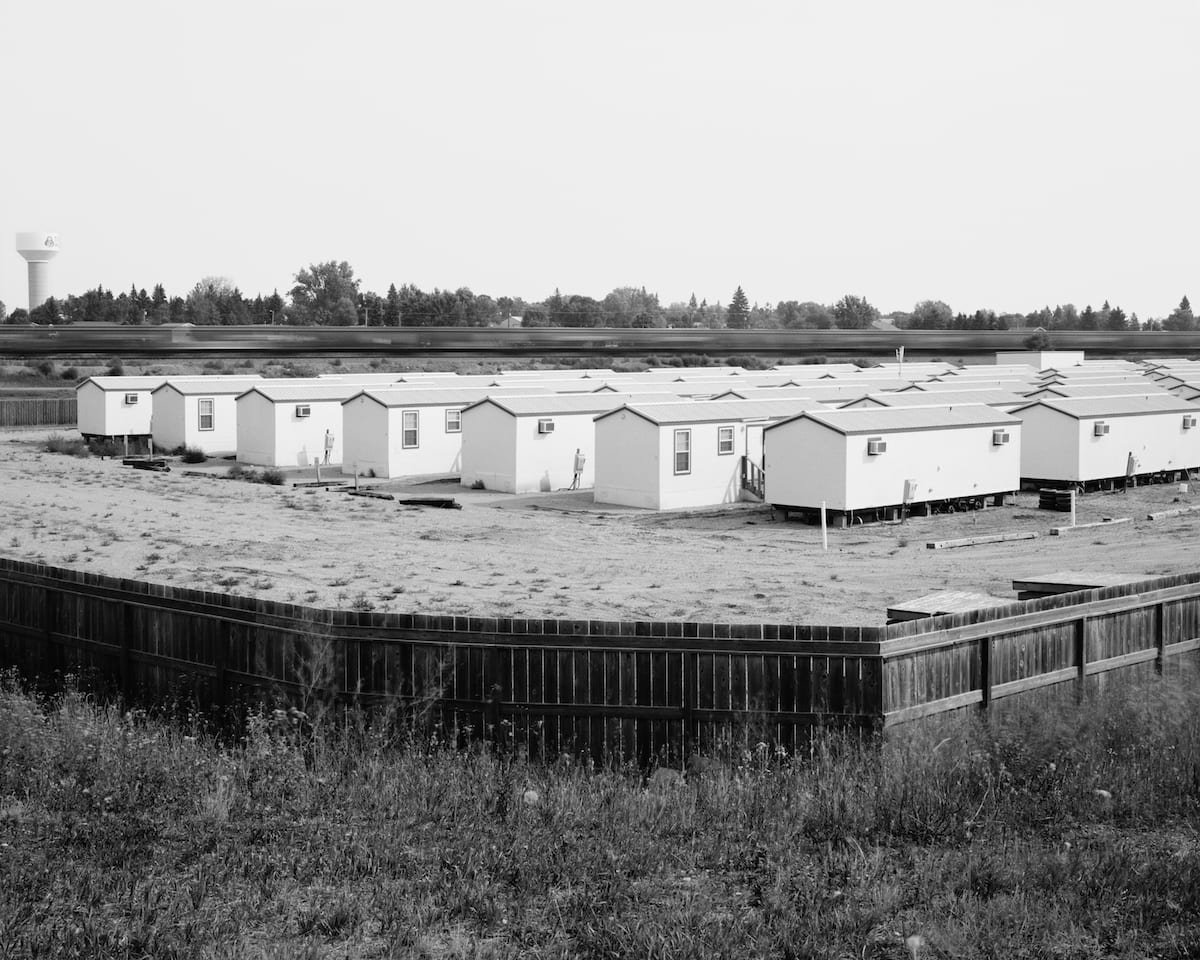
–
How did you first become interested in photographing the impact of fracking?
I’ve been photographing in North Dakota my entire life. I currently reside in San Francisco but I go back to photograph every year as this is my home. I had just finished another long-term project documenting my family’s farm and I had heard about all of the things happening out west with the oil boom. There were these larger than life stories about the “new wild west”, about how so many jobs were available and the incredible salaries people were receiving, and how all of these people were flocking to the area. At the time, the country was in a slight economic downturn and so there was this attitude of: “wouldn’t it be great if all of these jobs were available?” I was curious to understand what all of the hubbub was about and so took a trip down there to see for myself.
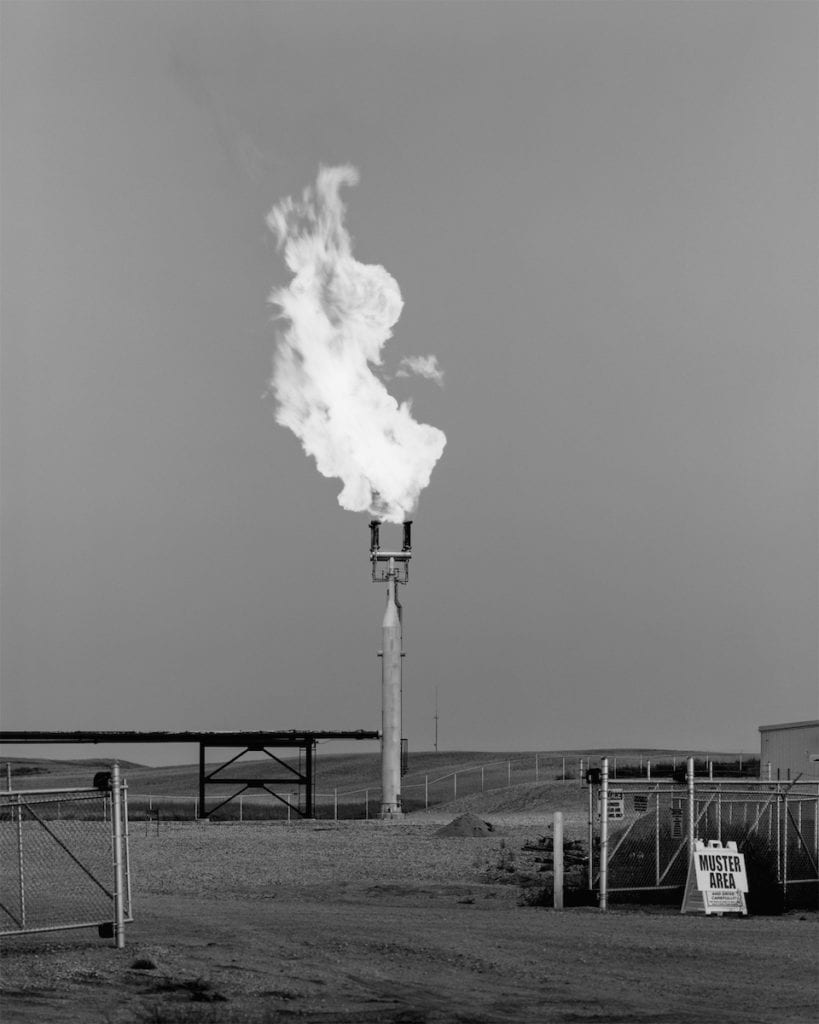
What cultural or societal changes have you noticed since you started the series?
People are much more distrusting of all these new people coming in who they don’t know. There’s an increase in violence and human trafficking. All sorts of nasty things that these communities weren’t prepared for. It was originally a very rural state. Neighbours trusted neighbours; you always knew who was around and no one felt that threat of the unknown. Farmers and ranchers, who now have oil wells in their backyards or in view of their homes, are dealing with increased truck traffic and noise and have had their whole community turned upside down. That trust and sense of community have eroded.
And, in terms of photography, what were the main differences between this year and last year?
I had been shooting this project exclusively in colour and, prior to that, for my series on my family’s farm, I had used black-and-white. Winning the Intrepid Film Photography Awards gave me a good opportunity to look at the project in a different way. The Intrepid camera and Ilford black-and-white film forced me to explore different ways of looking at the landscape; I focused more on the infrastructure and the industrialisation taking over the landscape.
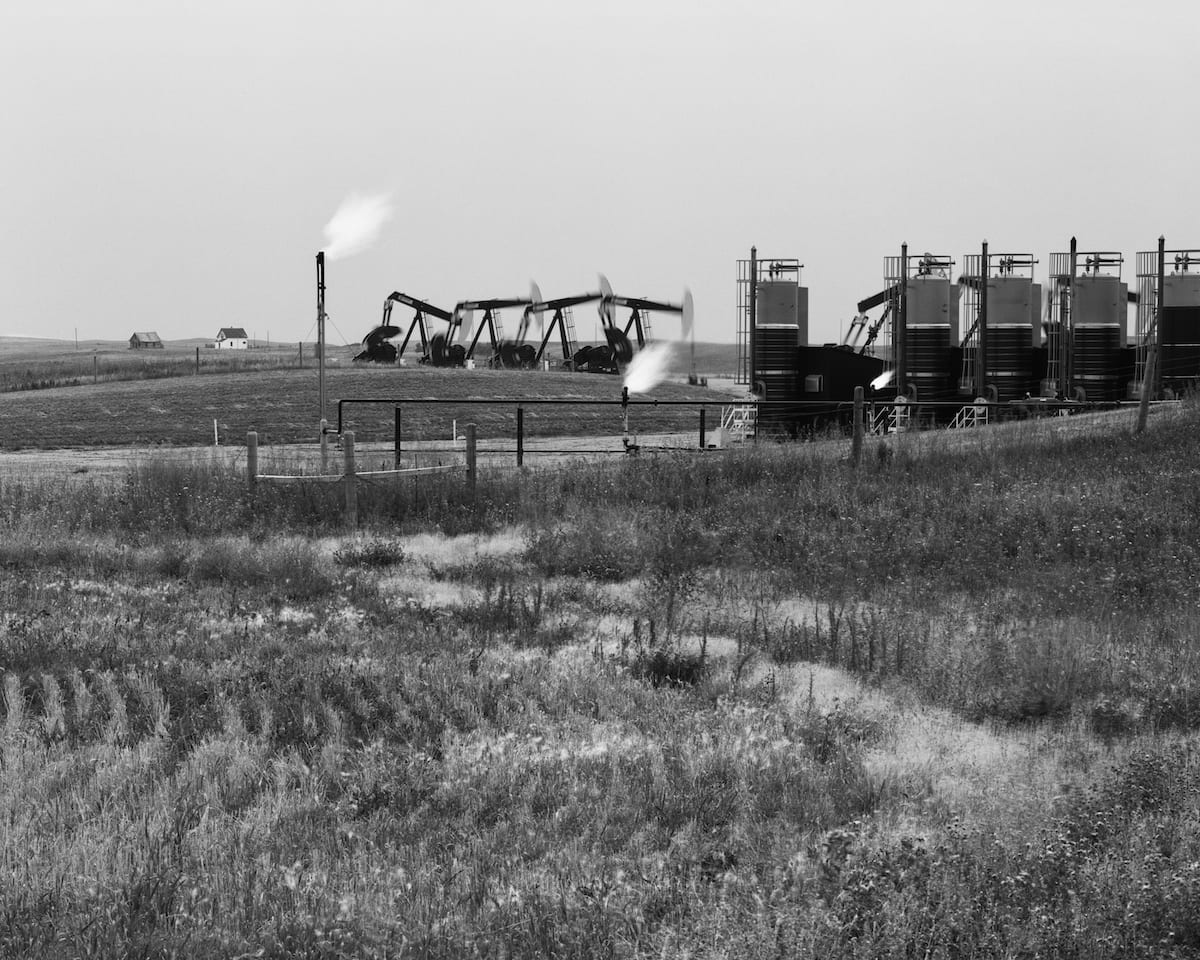
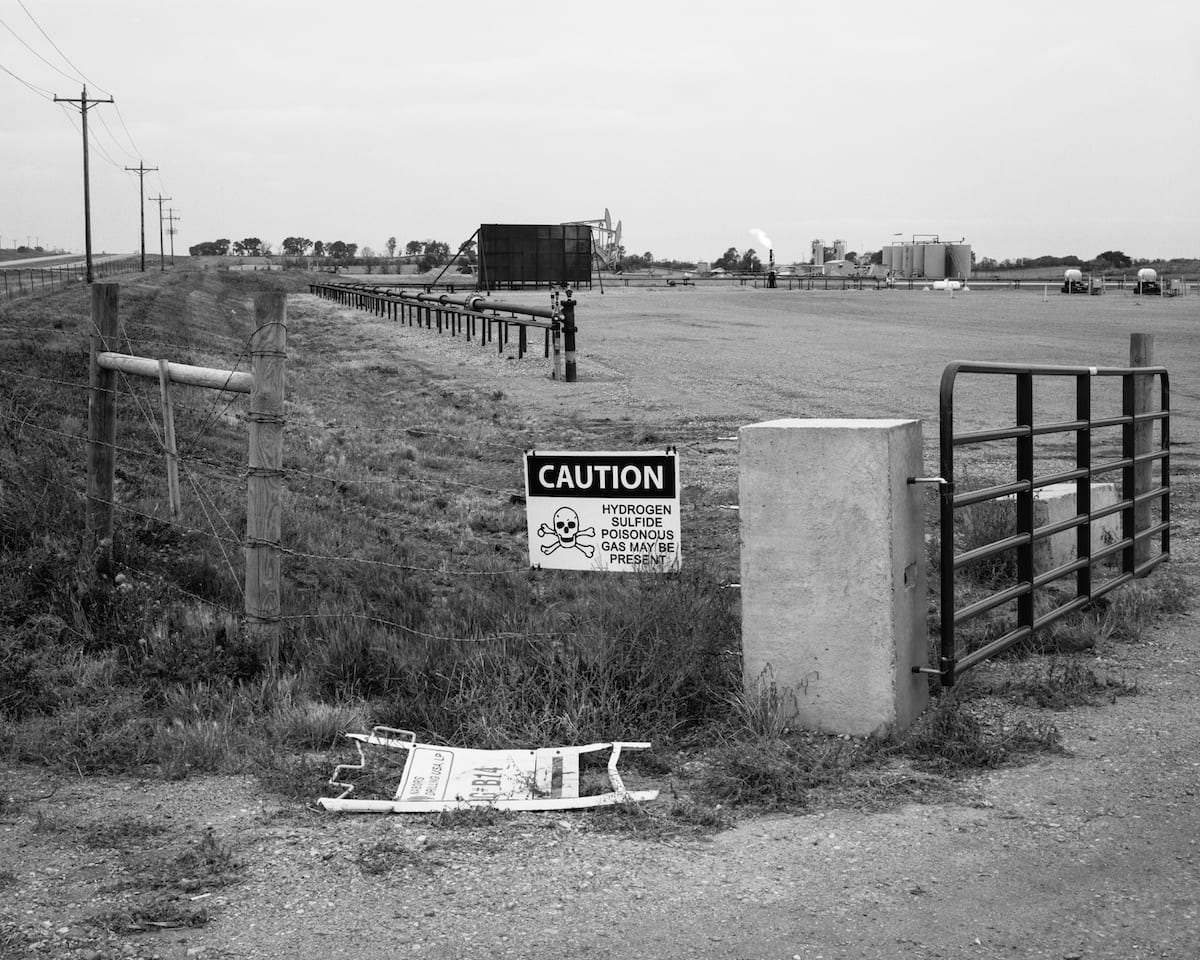
Your work conflates the political and the personal. Many families are caught in the crossfire of this oil boom, with their land being overtaken by fracking sites. Do you see this conflation as integral to this project?
My passion lies in connecting and showing the personal. All my projects have that personal connection. I find that is what I can speak most passionately about because it is what I know and live. An important part of this project was exploring my connection to the subject matter. My mother’s side of the family settled in the oil fields during the 1920s before any discovery of oil was made. Today, we have received royalties and cheques from oil companies for oil exploration. I wanted to explore this conflict: my family is profiting from this, but I am against it. What I want is responsible development of the state’s resources.
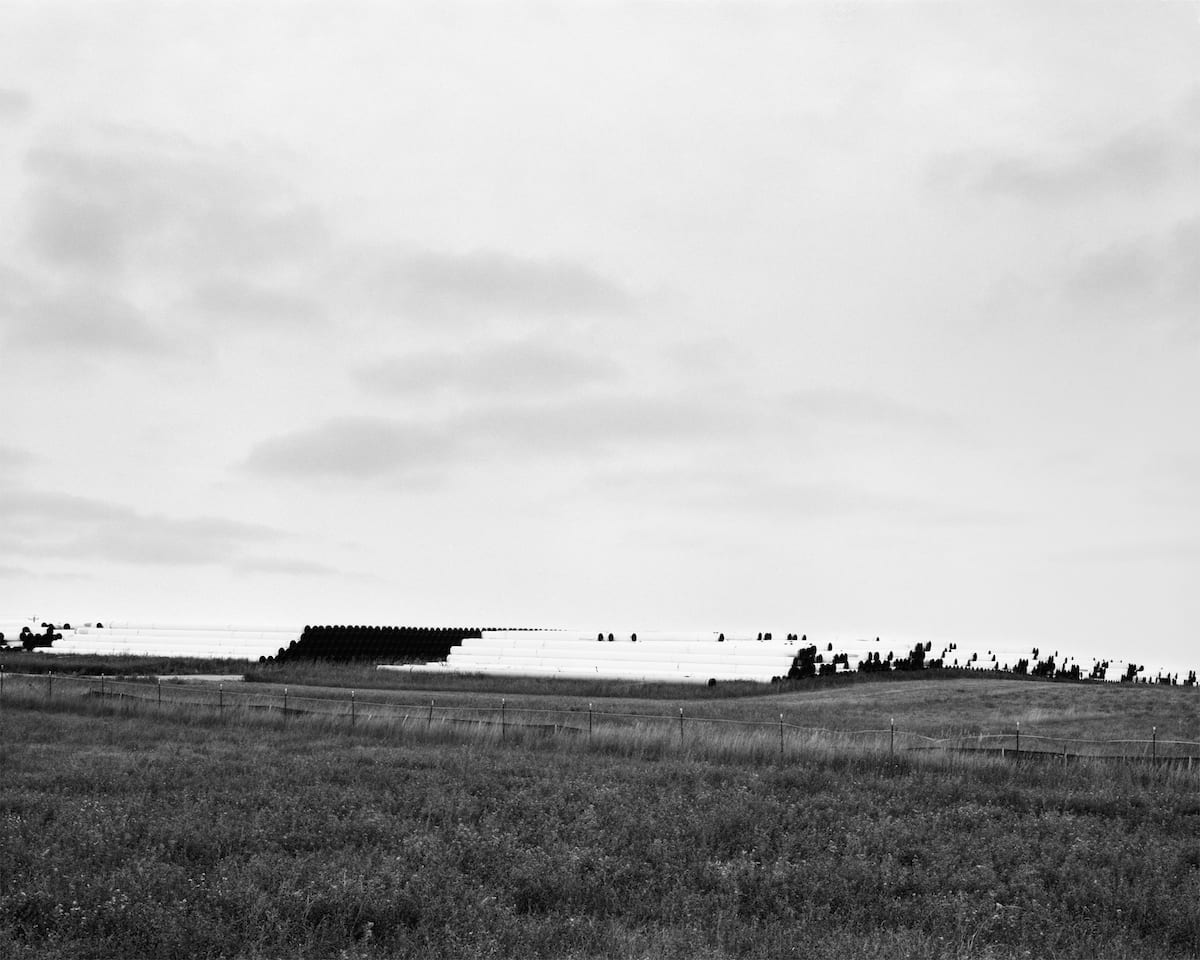
What else do you hope people feel or think when they see this series of images?
Ideally, I would like to effect change. I don’t know if, as a lone individual, I have the time to do that, but I can do my part and get my images into the hands of those who have the power to do something with them. I have given presentations to local legislators in North Dakota but unfortunately, the last election saw a lot of Democrats voted out. There are lots of roadblocks and hurdles, but I do a lot of artist talks at colleges and schools and try to do outreach that way.
I’m also hoping that the series elicits some curiosity about a place that people wouldn’t necessarily have known about otherwise. North Dakota isn’t really a top world travel destination. Even though it seems like this is happening in a tucked away corner of the world, it does have implications for the rest of us. It could potentially happen in your backyard.
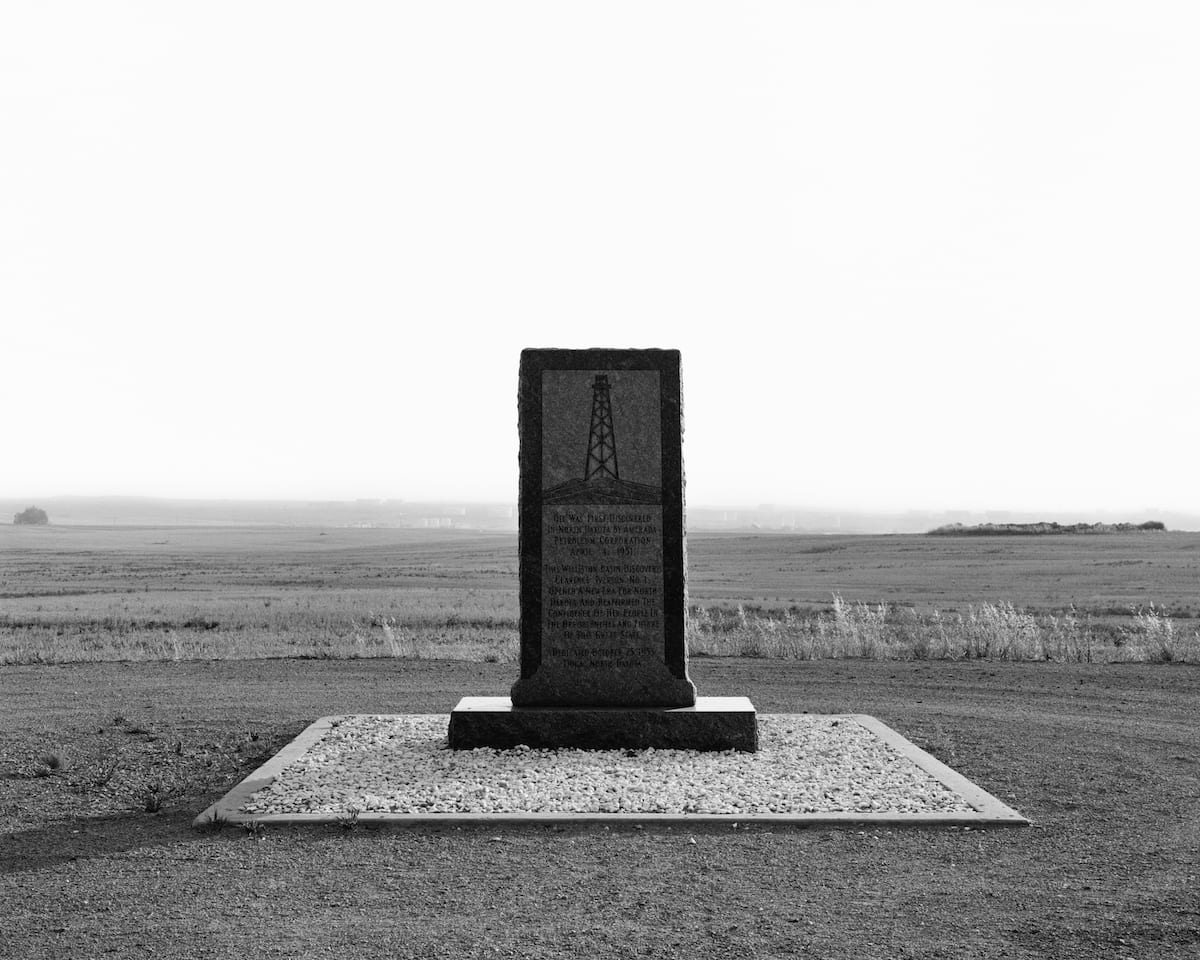
The Intrepid Film Photography Awards pop-up exhibition, supported by Metro Imaging, will be open to the public at BJP’s east London gallery space at Anchorage House, 9th Floor, 2 Clove Crescent, E14 2BE, from 05 to 18 October 2018 between 9:30 am and 7:00 pm, Monday to Friday. Look out for more information about the launch in our upcoming editorials.
–
This content is supported by Intrepid Camera Co. Please click here for more information on sponsored content funding at British Journal of Photography.


